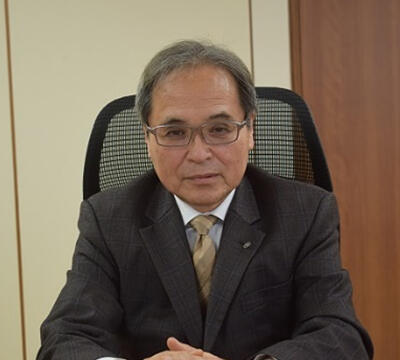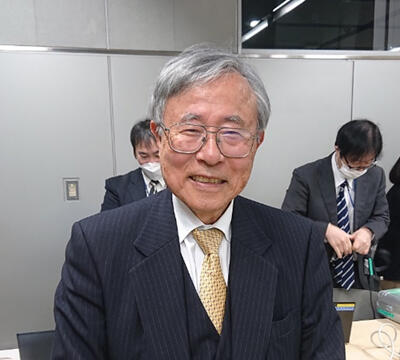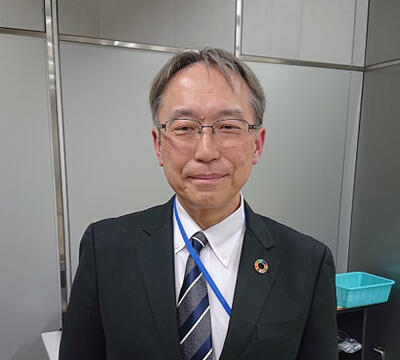The Japan Science and Technology Agency (JST) is implementing a five‐year project for the creation of innovative green transformation technologies (GteX) using a supplementary budget for FY2022 (49.7 billion yen in funding), in which researchers from universities and national research institutes across Japan will work as a team on three challenges: innovative storage batteries with low environmental impact and dramatically high performance, hydrogen innovation based on an essential understanding of hydrogen functions, and new bioproduction technologies through identifying unknown metabolic pathways. JST president Kazuhito Hashimoto commented, "We are in the process of designing a detailed system for GteX, but the Specially Promoted Research for Innovative Next Generation Batteries of the Advanced Low Carbon Technology Research and Development Program (ALCA‐SPRING) has proven that team research involving top researchers from across Japan is effective even in basic infrastructure research. We will continue development with this as a model."


In ALCA‐SPRING, top researchers from 80 laboratories at 50 universities and national research institutes across Japan participated for 10 years from 2013‐22, developing all‐Japan, large‐scale, team‐based research and development of next‐generation storage batteries.
Although it has numerous research accomplishments, the solid‐state lithium‐ion battery development team has made a significant contribution to practical applications by transferring its entire team to NEDO's SOLiD‐EV project, in which many companies are participating. The commercialization of small solid‐state batteries is progressing, with TDK Corporation, FDK Corporation, Murata Manufacturing Co., Ltd., and Maxell, Ltd., building mass production facilities. They developed the world's highest‐performance cathode material for lithium‐sulfur solid‐state batteries, and identified the degradation mechanism of the electrolyte interface. The team has also many achievements in oxide solid‐state batteries, cathode‐insoluble lithium‐sulfur batteries, metal‐air batteries and magnesium metal batteries.
NIMS Fellow Kohei Uosaki, who is also the program officer (PO), said, "Japan was the leader in battery research, but since 2000, it has been rapidly overtaken by China and the U.S., and has quickly lost ground in the market and elsewhere. Despite this sense of crisis, past storage battery development projects lacked effective coordination between projects. As such, a workshop in 2011 led to the launch of ALCA‐SPRING on the basis of collaboration and a joint study meeting between the Ministry of Education, Culture, Sports, Science and Technology (MEXT) and the Ministry of Economy, Trade and Industry (METI). The project has an overall governing board, consisting of project leaders from MEXT and METI (RISING, ALCA, CREST/PRESTO, etc.) and private companies. It is often reported that we have developed the world's highest‐performing electrodes and electrolytes, but the most important thing about a battery is whether it actually works when put together as a whole, so it was necessary for team‐based research to proceed. In the beginning, there were differences in the awareness of each researcher, but as discussions at each phase‐gate and governing board and team meetings proceeded, the team gradually came together, for example, by realizing and seeing results from various stimuli from different perspectives."
In fact, many researchers were replaced at the phase‐gates, and of the 77 original members (PIs), 36 are still involved, while 28 joined in the middle of the process. Many of these researchers have no experience in battery research and development. The project has also fostered a lot of talent, with 393 of its 511 master's students and 42 of its 102 doctoral students being involved in the project employed in battery‐related companies.
Masahiro Tatsumisago, president of Osaka Metropolitan University and leader of the solid‐state battery team, says, "There are two sub‐teams: solid‐state lithium‐ion batteries and solid‐state lithium‐sulfur batteries. Under the policy of raising the overall technology readiness level (TRL), we have promoted manufacturing and analysis in unison in both materials and device development. Of them, the solid‐state lithium‐ion battery team had a TRL of more than three in the five‐year stage gate and was also highly praised by company officials, so the entire team was transferred to the NEDO project. At NEDO, many researchers initially felt distant from companies, but as they began to work together to create batteries, they were able to advance their team research by understanding what basic research companies really want and how their work will be incorporated into batteries. On the other hand, lithium‐sulfur has intrinsic advantages as a material for solid‐state batteries, so we are continuing our research to increase the TRL in the JST project."

Hashimoto noted "In order to promote team‐based research, it is necessary for all parties involved to have thorough discussions. Evaluations should neither be short‐sighted nor too long‐term. It is important that the evaluation results are reflected in project management and linked to the budget allocation. I want to choose project leaders for GteX who understand the significance of the project and show strong leadership."
JST will select three POs for GteX, and then each project leader will be publicly recruited.
This article has been translated by JST with permission from The Science News Ltd. (https://sci-news.co.jp/). Unauthorized reproduction of the article and photographs is prohibited.




